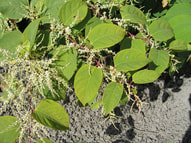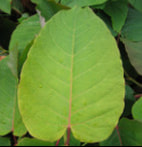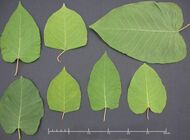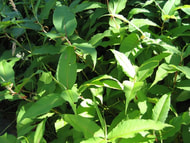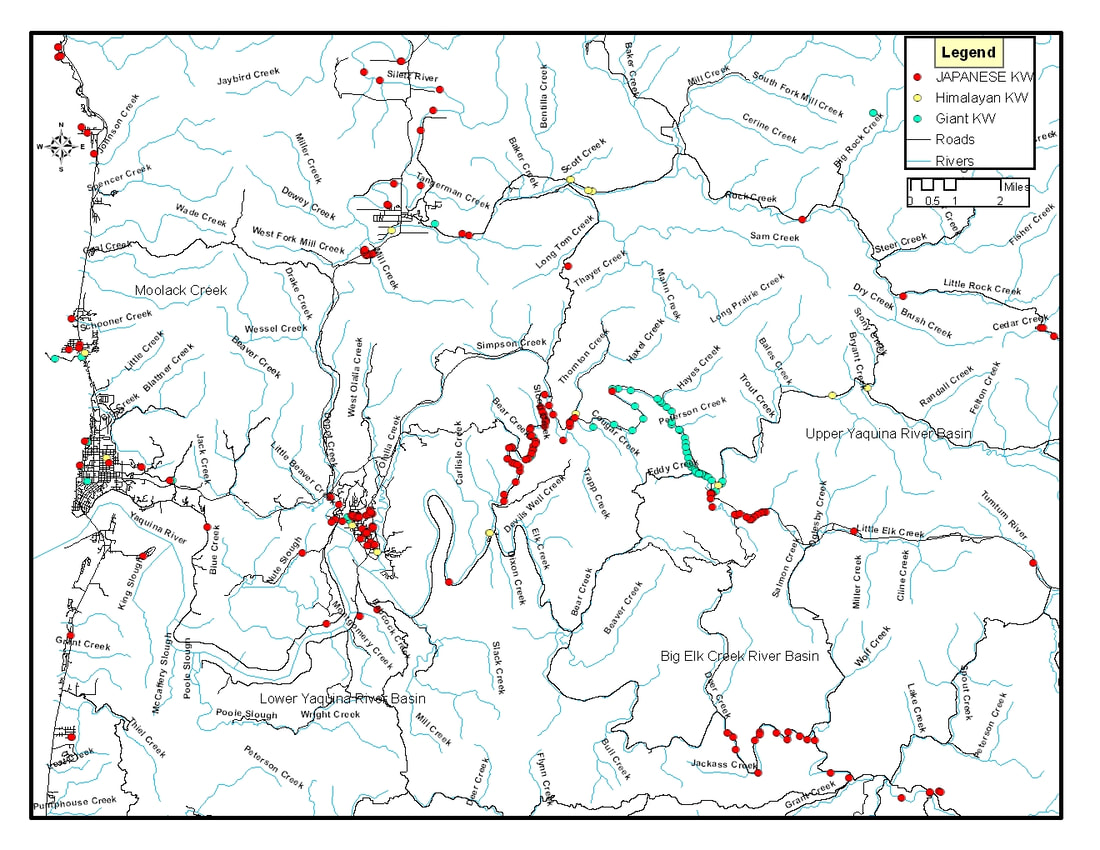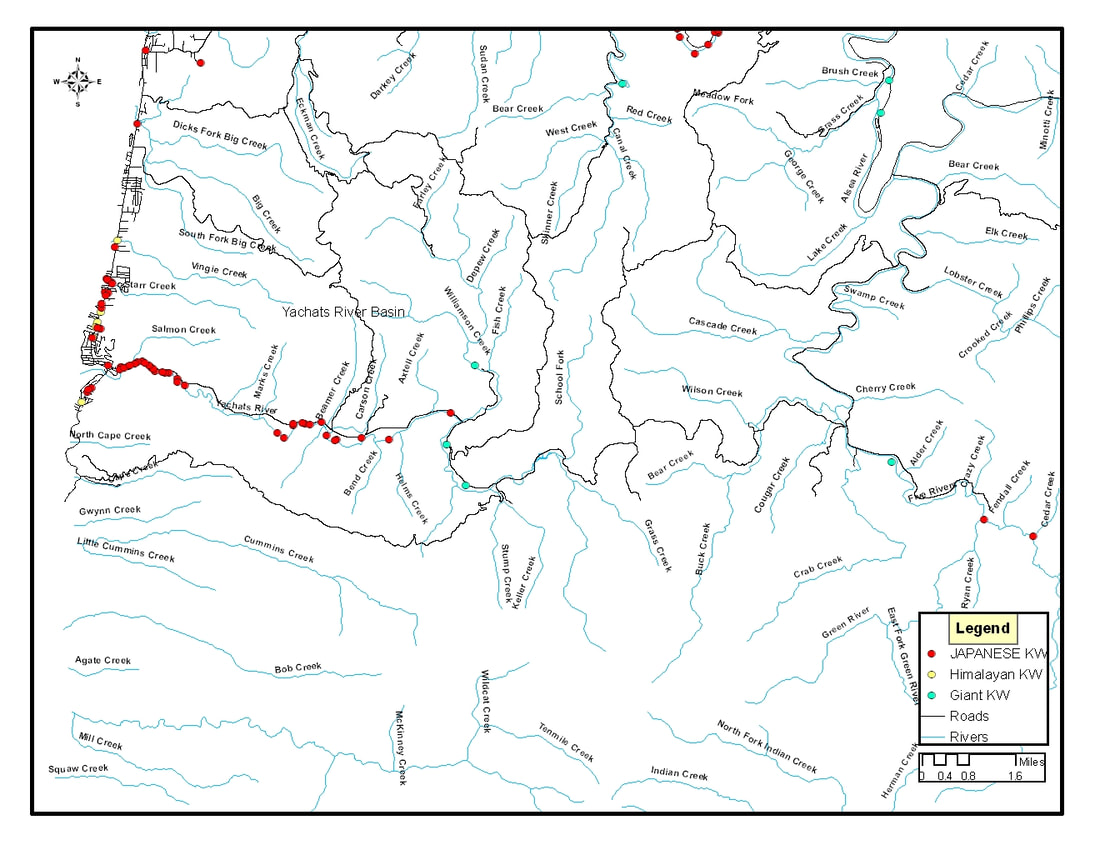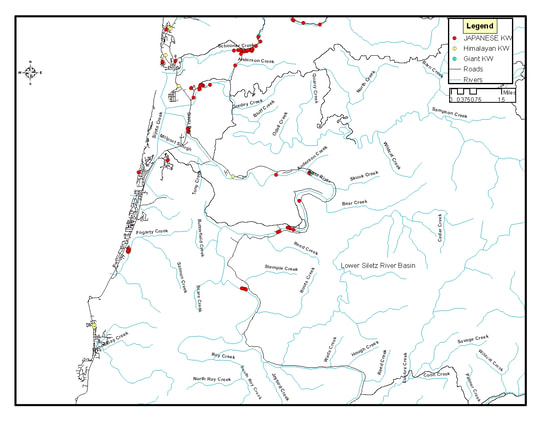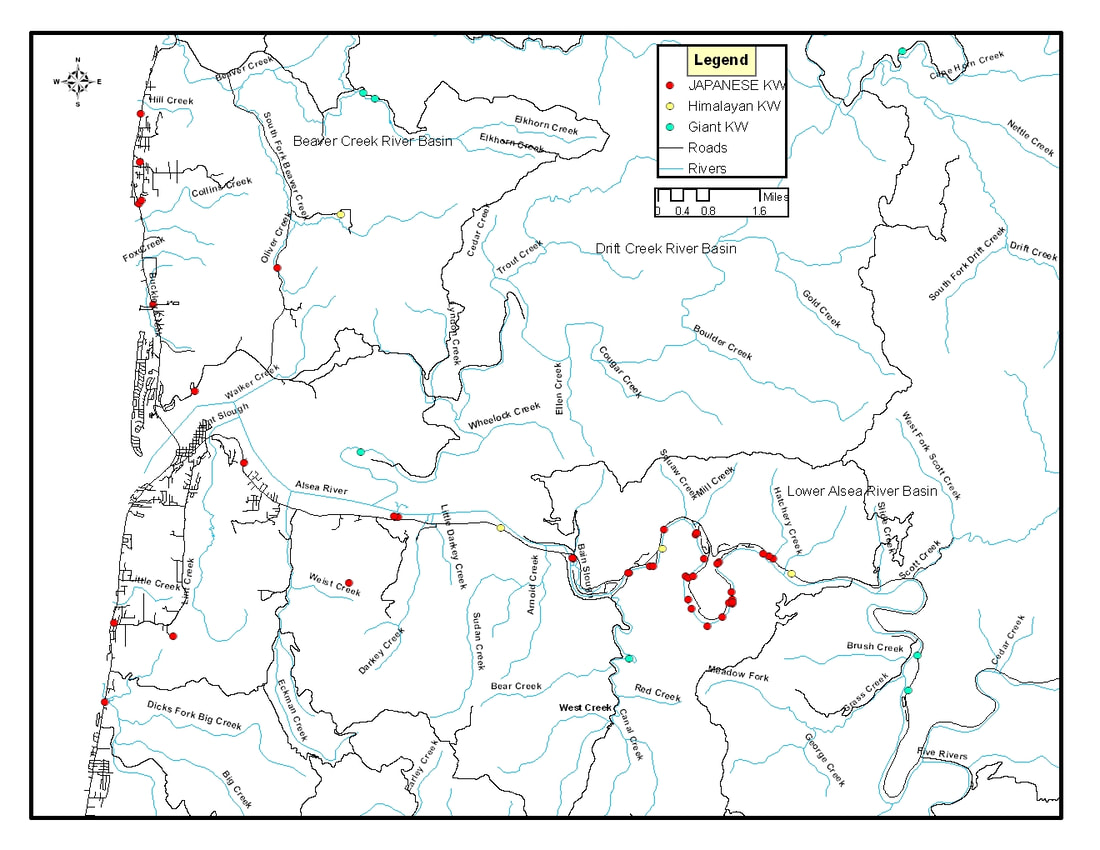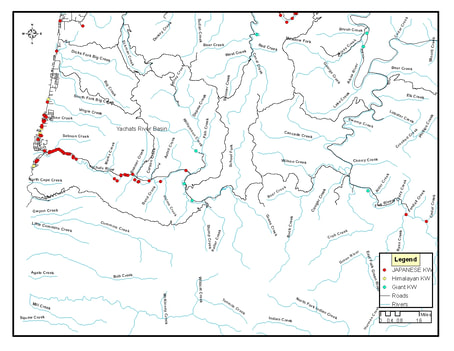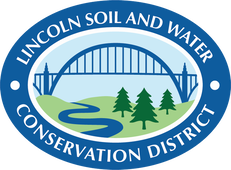INVASIVE Knotweed Detection and Control
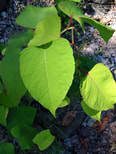
Asian knotweeds are highly invasive plants found in riparian areas throughout the Pacific Northwest. These species pose a serious threat to our rivers, riparian forest and floodplain areas. ODA classifies all four of these knotweed species as Class B noxious weeds, this means they high priority for containing their current populations and preventing their spread. Japanese knotweed is internationally recognized as one of the World's 100 Worst Invasive Alien Species by the Invasive Species Specialist Group, an international network of scientific and policy experts that work under the the umbrella of the Species Survival Commission (SSC) and the International Union for Conservation of Nature (IUCN).
What is knotweed?
Knotweeds are shrubby herbaceous perennial plants native to Asia that were brought to the U.S. in the late 1800's as garden ornamentals. They have dispersed in watersheds throughout the country due to their ready ability spread vegetatively and by seed. Knotweed plant tissue and seeds often contaminate fill material used in construction projects, which facilitates their spread in to new riparian corridors. Other common names for knotweed include Mexican or Japanese bamboo, elephant ear, Godzilla weed, and fleece flower.
Why is knotweed a problem?
Knotweed rapidly spreads by seed dispersal and from the spread of broken pieces of plant tissue. Knotweeds grow rapidly, averaging 2-4 feet a month in late spring through the summer. In riparian corridors and flood plains, uncontrolled knotweed populations will completely displace native vegetation. This increases soil erosion potential due to the above-ground portions of the plant completely dying back during winter winter dormancy, creating an absence of buffering vegetation during winter storms and high water events. Uncontrolled knotweed populations also prevent the natural establishment of native trees and shrubs, which is critical for maintaining the watershed structure and regulating the water temperatures necessary for fish and wildlife habitat. Large patches are very difficult to eradicate, even with herbicides!
How does it spread?
Generally, knotweeds spread when root or stem fragments are moved during flood events or by the transportation of contaminated soil during construction projects. A fragment of knotweed as small as 10 grams in weight (1/3 of an ounce) is a sufficient amount of plant matter to take root and develop into a new plant. Disturbances, such as uprooting and cutting, promote rhizome growth in knotweeds. So, it is absolutely critical that any cutting or transport of knotweed be done by a natural resources professional. During professional control of knotweed, any excess plant material should be bagged and disposed of at a landfill.
Controlling Knotweeds
Knotweed infestations take several years of treatment to control and the most effective method of treatment is repeated herbicide application. Contacting a natural resource professional as early as possible is integral to knotweed control. If you see knotweed, contact the Oregon Invasives Hotline as well as Lincoln SWCD by phone at 541.265.2653 or email.
Click the link below for an in-depth summary of current knotweed control practices:

